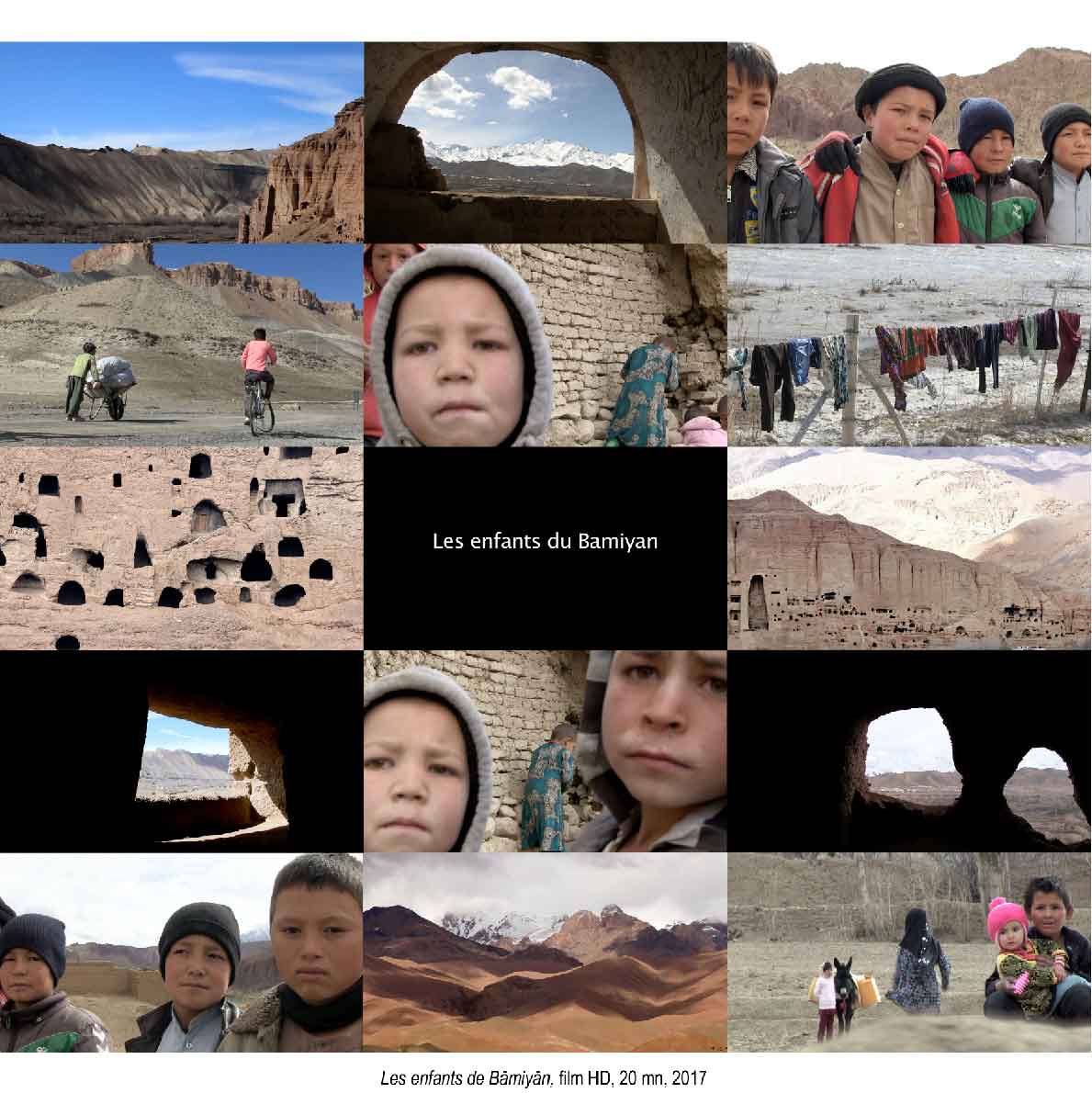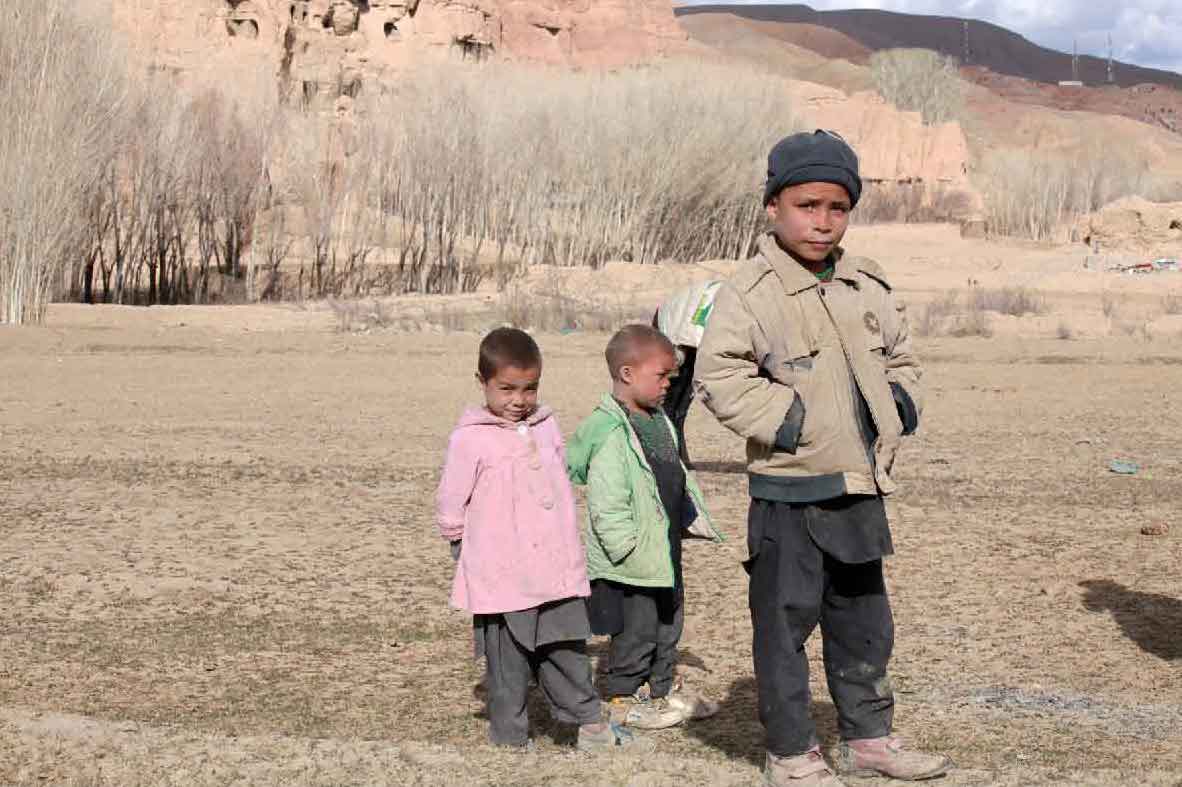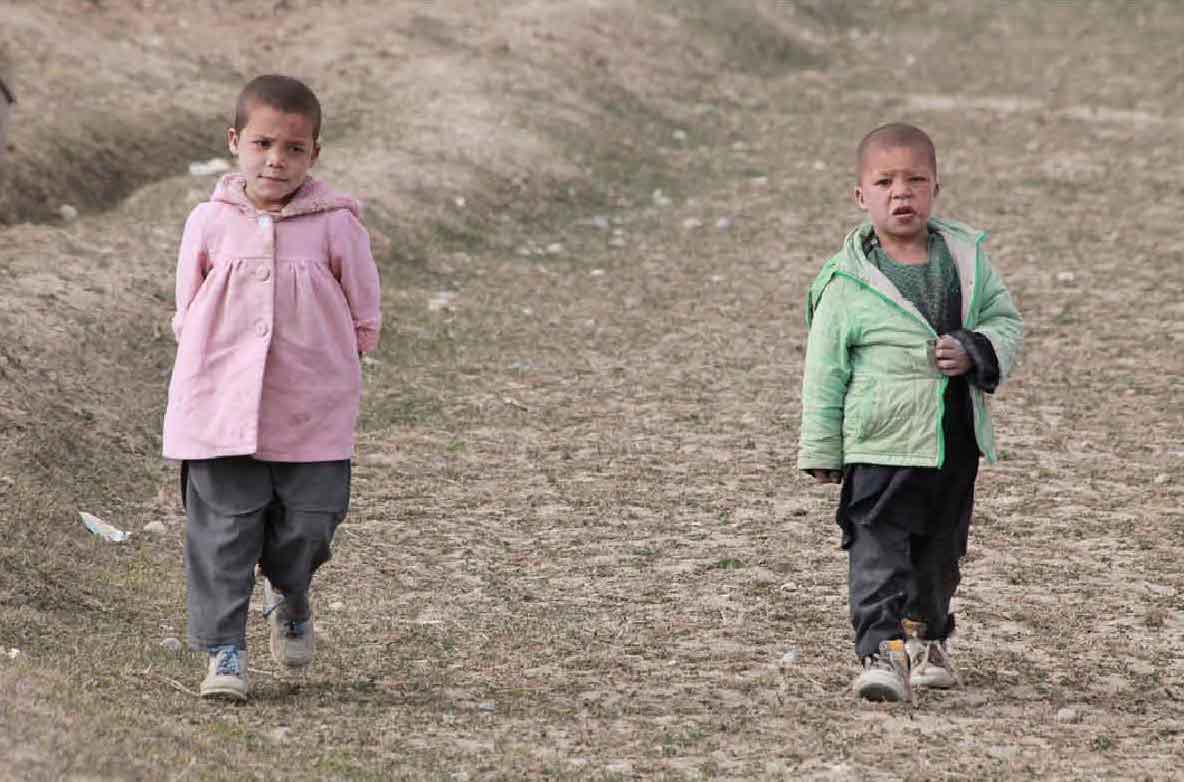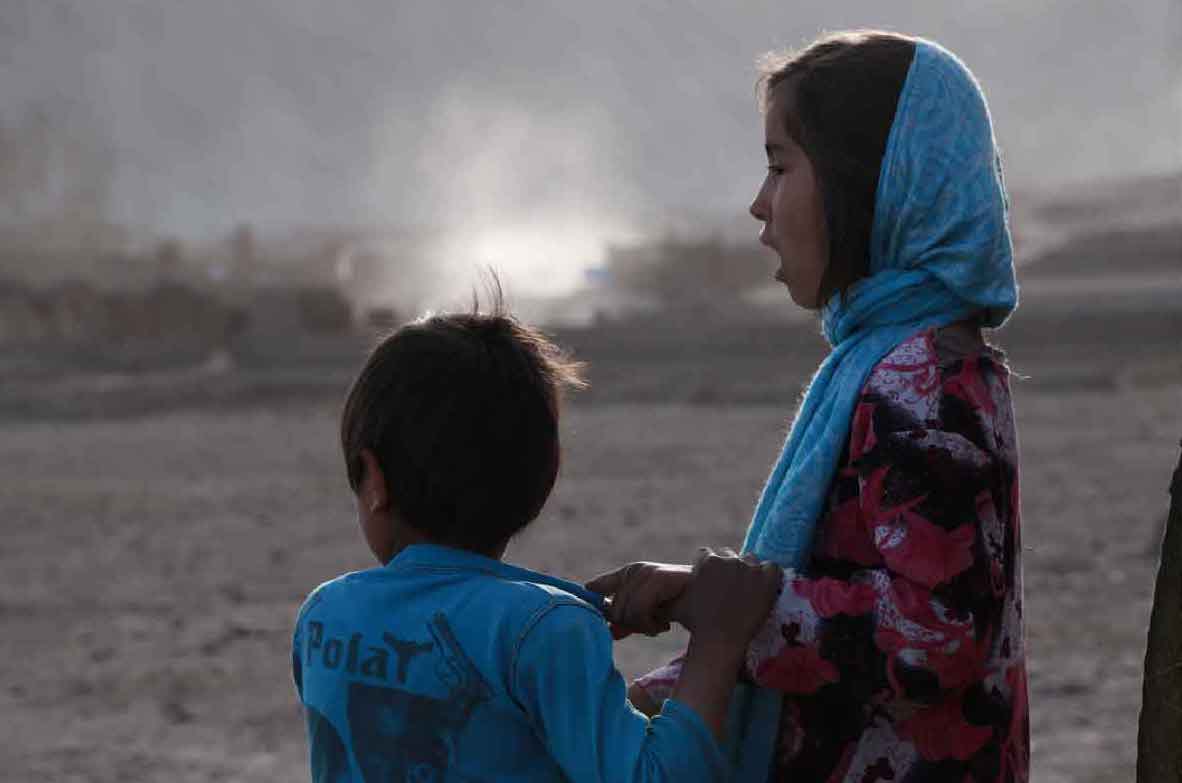Archéologie de l'architecture, de l'enfance, de l'histoire, du corps, des temps
2017
Film Les enfants du Bâmiyân
Antres-Temps (Ritournelle de Bâmiyân)
Il faudrait transformer l’élégie en ritournelle. L’élégie est l’art des adultes au moment où ils comprennent tout ce qu’ils ont perdu. La ritournelle est l’art des enfants qui jouent dans les décombres, et qui jouent à faire des boucles : à faire danser, à faire revenir les fantômes d’une mémoire que les adultes croyaient justement perdue. Dans le film de Hana Makhmalbaf Le Cahier, à peine reçue en plein visage la vision terrible du dynamitage des Bouddhas de Bâmiyân, tout commence ou tout recommence avec celle d’un enfant qui, depuis une anfractuosité de la falaise, psalmodie, comme une ritournelle, son alphabet. Ainsi les enfants continueront de jouer devant la falaise. Ils s’amuseront à regarder — ou à explorer — les trous qui la constellent. Ils savent que dans les antres sont les temps. Comme sur le front du grand-père sont les rides, les blessures ou l’écriture de toute son histoire. Alors ils imagineront peut-être la falaise elle-même comme le front gigantesque d’un personnage bienveillant encore sous la terre, et qui resurgira un jour dans une puissance qu’aucun pouvoir ne pourra plus contenir.
Extrait de "Antres-Temps (Ritournelle de Bâmiyân)"
Georges Didi-Huberman
Publication "galerie Éric Dupont, 2017."
Time In-Between
We should turn the elegy into a refrain. The elegy is the art of adults at the moment when they understand everything they have lost. The refrain is the art of children playing amid rubble, playing at making loops: dancing, bringing back the ghosts of a memory which adults, it so happens, thought lost. In Hana Makhmalbaf’s film Le Cahier [The Notebook], hardly has the fearsome vision of the blowing-up of the Buddhas of Bamiyan been received full face, than everything starts, or everything starts again, with the vision of a child who, from a crack in the cliff, chants its alphabet, like a refrain. So children will go on playing in front of the cliff. They will have fun looking at—and exploring—the holes which stud it. They know that in caves lie times. The way the grandfather’s forehead bears wrinkles and wounds, and the writing of his whole history. So they will perhaps imagine the cliff itself like the gigantic forehead of a benevolent person still under the earth, who will one day re-emerge in a strength that no power will ever be able to contain.
/ Accueil /
Biographie / Oeuvres / Expositions / Films / Thématiques / Documents
Textes - articles / Editions / Liens - contact / Au hazard





